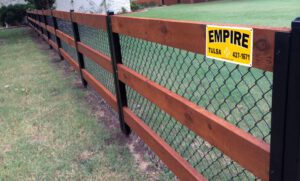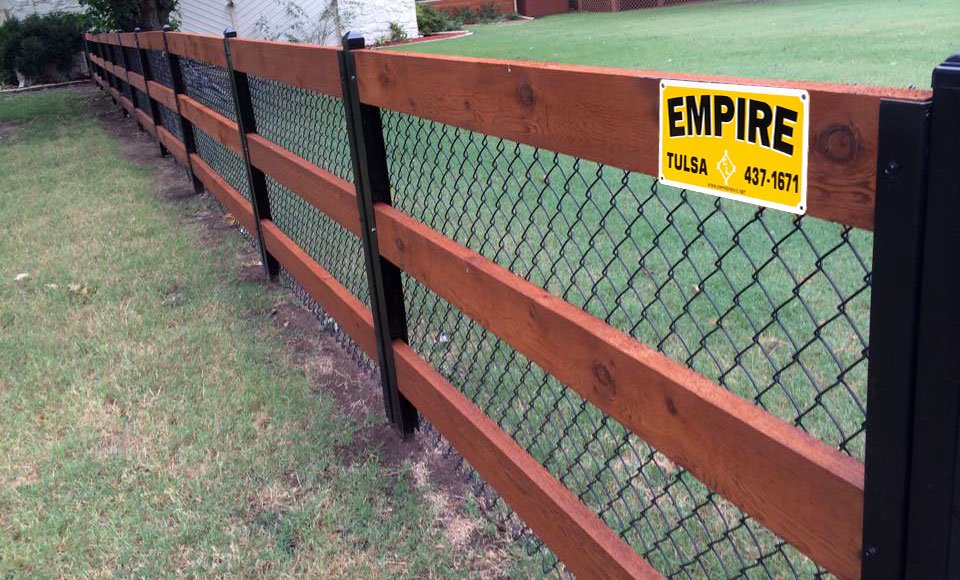Chain Link Fence New Jersey is one of the most popular fencing options for homes. It is a durable and affordable option that provides a high level of security. It can also be used to delineate property lines and contain pets or children.
Before purchasing a chain-link fence, carefully measure the perimeter of your yard to determine the amount of fencing you need. Then consider the height of your fence.
When it comes to determining the cost of a chain-link fence, you will need to consider several factors. First, you will need to choose a type of fencing mesh and determine its price per foot. You will also need to figure out the length and height of your fence. Once you have these figures, add on any extras that you want, such as gates or special hardware. Finally, you will need to find out whether your region requires a permit for fence installation. If so, you will need to add the cost of the permit to your estimate.
The cost of a chain-link fence can vary greatly depending on the materials and installation. The simplest type of chain-link fencing uses plain galvanized steel and costs about $10 to $17 per linear foot, including professional installation. Other options include vinyl-coated and aluminum-coated steel, which cost more but are more durable.
If you are on a tight budget, consider using vinyl or aluminum to finish the chain-link fence. These finishes are relatively inexpensive and can make the fence look nicer and more attractive. They will also protect the fence from damage and help it resist corrosion.
Another way to save money on a chain-link fence is to install privacy slats. These slats are woven between the chain-link wire and can be made in a variety of colors. While they don’t offer complete privacy, they will reduce visibility.
You may want to consider adding greenery to your chain-link fence, such as vines and flowers. These will add a beautiful aesthetic to your yard and can increase the value of your home. However, it is important to note that these plants can grow through the chain-link fence and cause damage. Therefore, you should remove any weeds or seedlings from your yard before they can get into your fence.
You can also paint your chain-link fence to give it a custom color and protection. However, this is a time-consuming project that involves painting each diamond of the mesh. In addition, you will need to apply multiple coats of paint. Therefore, it is best to hire a professional to do the work.
Durability
Chain-link fences can last much longer than other types of fencing, though how long they will last depends on how well you care for them. On average, these fences can last up to 15 years, which is much more than you would get from a wood or vinyl fence. However, the lifespan of your chain link fence can be dramatically shortened by the weather and the environment in which it’s located.
A chain-link fence is composed of several components, including metal wire, framework, fittings, and gates. It can be made from galvanized or coated metal, and it’s available in a variety of gauges and mesh sizes. Choosing the right material for your project is critical, as it will determine how sturdy your fence will be. It’s also important to choose a galvanized or coated steel fence that will resist rust and corrosion. This will help keep your fence looking good and lasting a long time.
Galvanized chain link is less expensive and more durable than other types of fences, which makes it a popular choice for homeowners. The black finish provides a subtle appearance and helps hide dirt and mildew. Additionally, it’s easy to clean and doesn’t require staining or repainting. In the event of a leak, you can simply apply a rust-resistant coating to prevent corrosion and protect your property from water damage.
One drawback of chain link is that it is prone to sagging over time. This can occur due to loose posts or stretched tension wires. To avoid this, it’s essential to check the condition of your fence regularly and re-tension the wires as necessary. Additionally, it’s a good idea to add three rows of barb wire or line wire to your fence if it’s higher than 1.8 m.
You can add a vinyl coating to your chain link fence, which will slow down the rate of corrosion even further. This option is more affordable than other options and can be installed by a professional. It also offers a number of benefits, such as a more pleasing aesthetic and the ability to grow plants around the fence without blocking sunlight.
Privacy
If your home has a chain-link fence and you would like more privacy, there are several ways to cover it. These coverings help keep out debris, pests, and sunlight and give your yard a more polished look. They are also less expensive than building a new fence or removing your current one. The type of cover you choose depends on the durability and maintenance you are comfortable with.
A few popular options for chain-link fence privacy include windscreens, slats, and natural vegetation. Windscreens are woven into the chain-link fence and offer quick, inexpensive solutions. They are available in a variety of colors and are easy to install. However, they tend to fade with the weather and are not as durable as wood or vinyl fences. Slats are inserted into the weave of the chain link and require more in-depth installation. They are available in a variety of materials and can be customized with different colored slats. Slats are more permanent than windscreens but less versatile and can be expensive.
Another option is to build a privacy wall from lattice panels. This is a cost-effective solution that can add curb appeal to your property. Be sure to attach the panels above ground to preserve their lifespan and prevent soil moisture and pests from damaging them. However, this method is not a good choice for tall chain link fences because it will block visibility from the house or other buildings in your yard.
You can also make your chain-link fence more private by adding a trellis or vines to it. Vines such as ivy will grow up the fence and provide privacy and a pretty, fragrant accent to your yard. Other plants, such as honeysuckle and wisteria, can be grown on a chain-link fence to obscure the view of your backyard from the street or neighboring homes.
Security
Chain-link fences provide excellent security and are commonly used in schools, playgrounds, and zoos. They are also useful in industrial settings where workers need to control access to certain areas of the facility. They can help prevent unauthorized entry and keep people from getting hurt by falling or running into dangerous equipment. A chain-link fence can also be used to contain animals, such as livestock or pets.
The most important component of a chain-link fence is the framework, which creates the structure on which the steel mesh fabric is hung. This framework is made of metal tubing and is often galvanized to protect against corrosion. The steel mesh fabric comes in a variety of gauges and sizes. It is then interlocked to form a sturdy but flexible barrier that can be curved and shaped as needed. It is usually coated to resist rust and increase its durability.
Some people may be tempted to try to break into the chain-link fencing, but this is not as easy as it looks. In addition, the gates on a chain-link fence can be secured with latches and locks to further prevent intrusions. It is important to regularly inspect the fence for loose or damaged sections and make repairs as needed.
One of the most effective ways to increase the security of a chain-link fence is to use steel fittings instead of cast aluminum. These are more difficult to tamper with and can be welded in place after installation. If you want to make your chain-link fencing even more secure, you can add a welded barbed wire strip or a razor coil.
Another way to improve the security of a chain-link fence is to use a thicker gauge or smaller diamonds in the mesh. Thicker fences are more expensive, but they will also be stronger and more durable. It is also possible to add a visual deterrent, such as inserted vertical strips, to reduce visibility. In high-security applications, steel fittings are often welded to the top and bottom of line posts.

